Here’s some more raw data about the housing market. This chart shows how much rent has increased compared to the overall inflation rate since 1960:
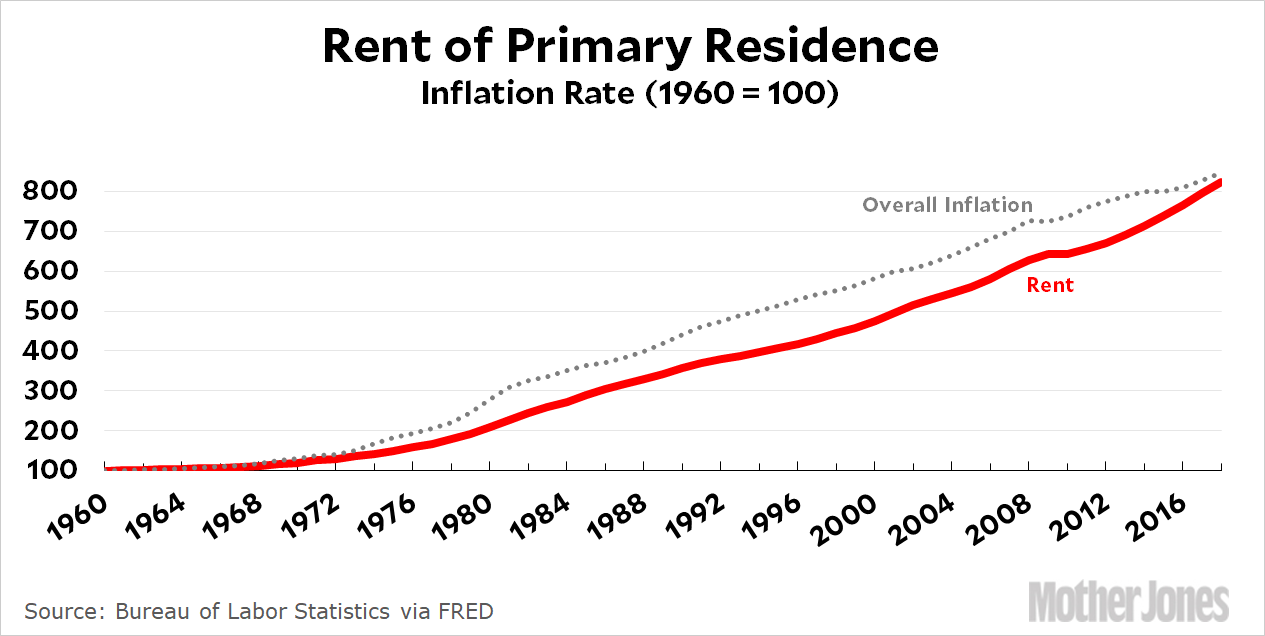
Over this period, rent has increased less than overall inflation. However, around 2000 rent inflation started to catch up. So let’s zoom in:
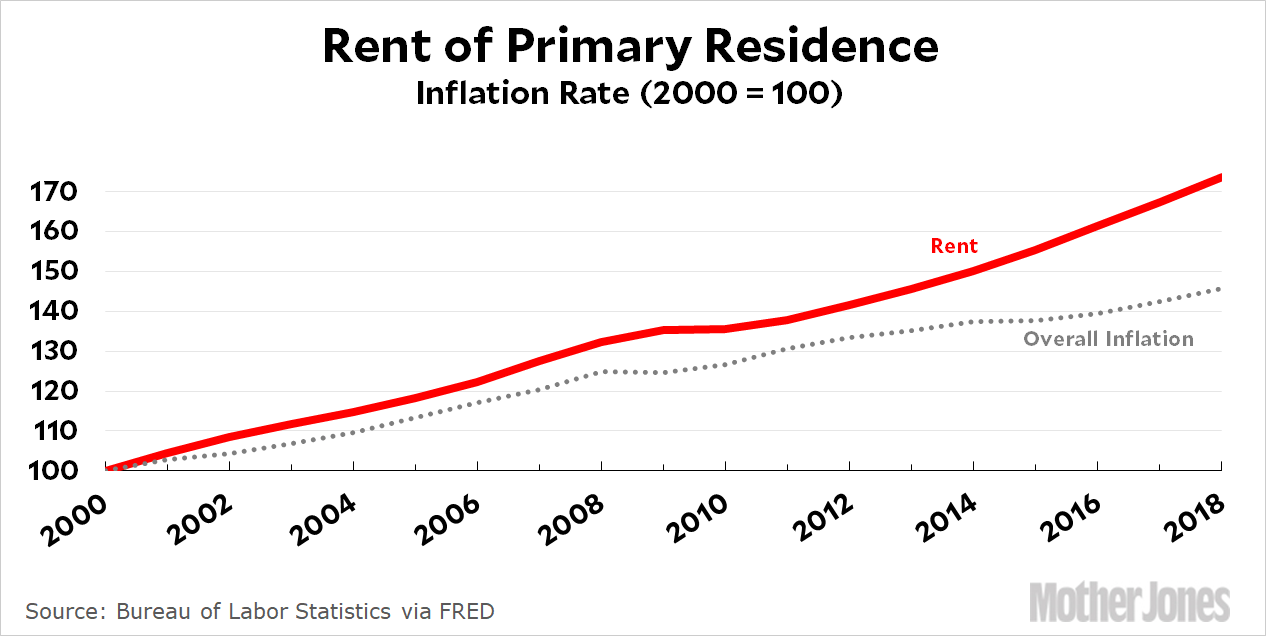
Since 2000, the rent index has increased 73 percent compared to only 46 percent for overall inflation. So rent has increased about 20 percent in real terms.
But it’s worth showing this as a percentage of income too. As I’ve been browsing around the internet I’ve seen a surprising number of completely screwed up charts about this. There are charts that compare real income to nominal rent. There are charts that compare real rent to real income but use the wrong numbers for income. There are charts that compare rent to some kind of mythical “renter income.” All of them should set off alarm bells instantly since they inevitably show that rent has increased by some phenomenally high number that no one should believe. So here is median rent compared to median income:
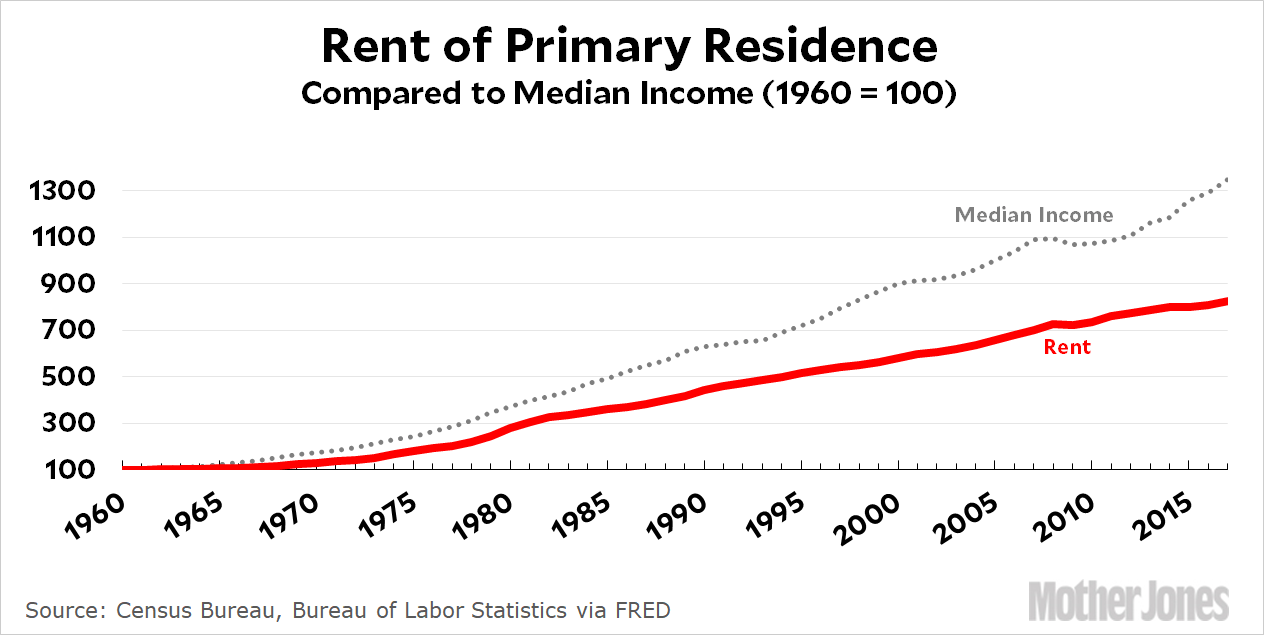
And here’s what we get if we zoom in on the past 20 years:
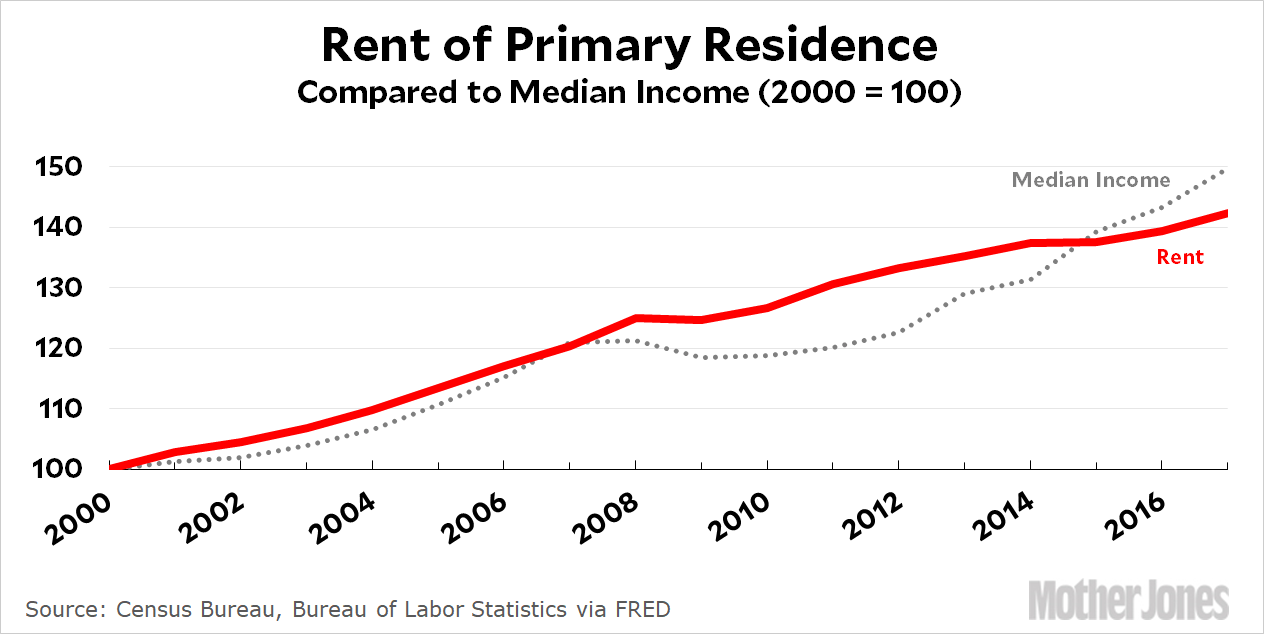
But what about young people, you ask? Or the poor? Here’s the same chart using median income for 25-34 year-olds and median income for the lowest income quintile:
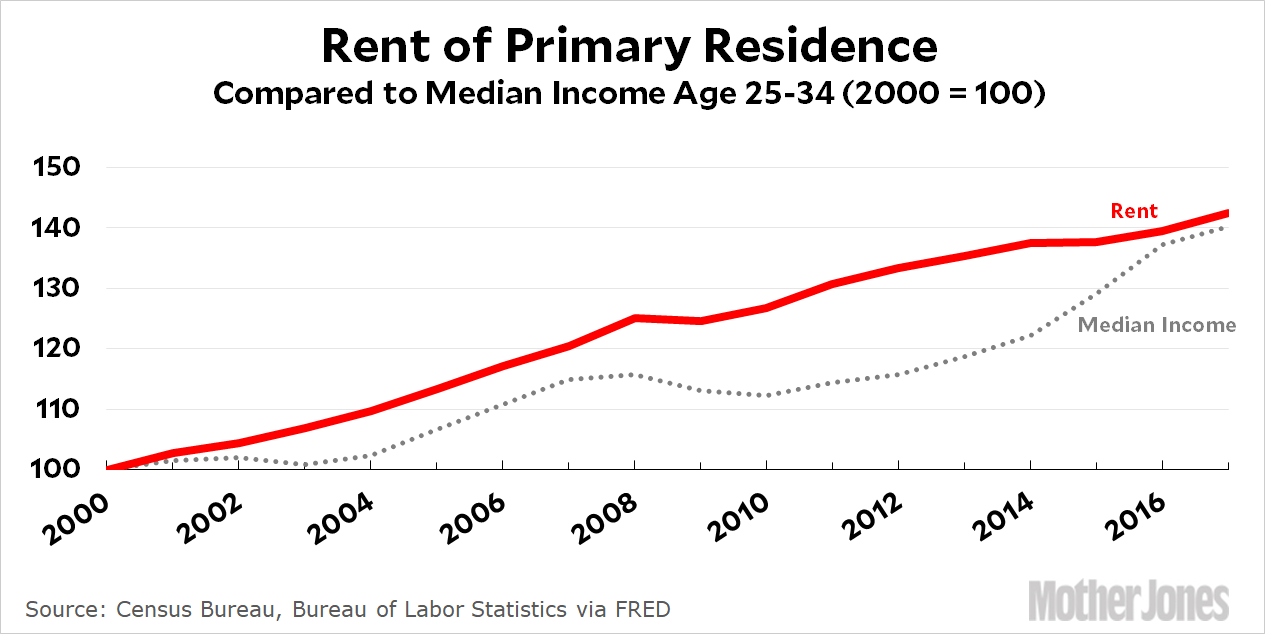
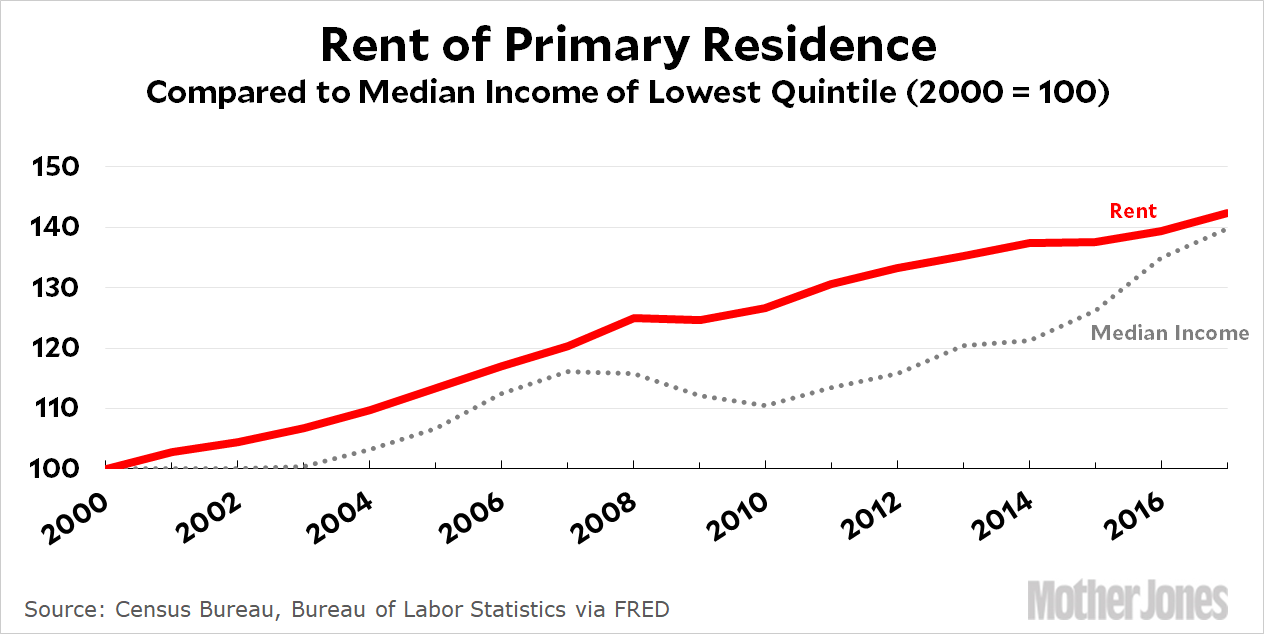
As with everyone else, incomes of the young and poor fell during the Great Recession and then rebounded. They didn’t rebound as much as for older and richer workers, but even so, their income has increased at almost exactly the same rate as rent. The young and the poor, if they rent equivalent housing, are paying only about 1 percent more than they did in 2000.
Once again: this is national data. It tells us nothing about either rent or income in specific big cities. On a national basis, however, it suggests that for the median renter, rent has either been flat or has fallen as a percentage of income over the past 20 years, and over the past 60 years it’s fallen considerably.

















